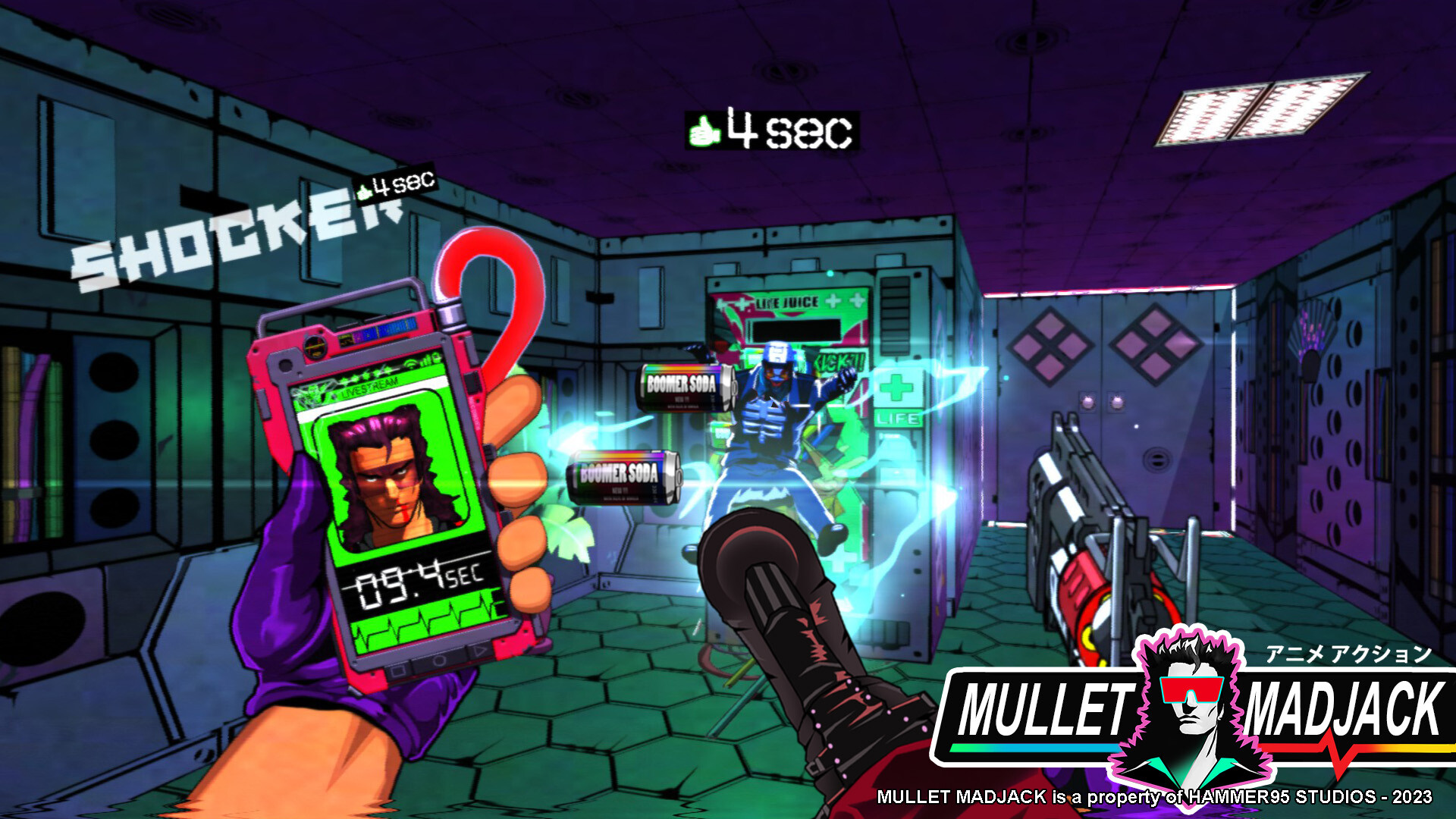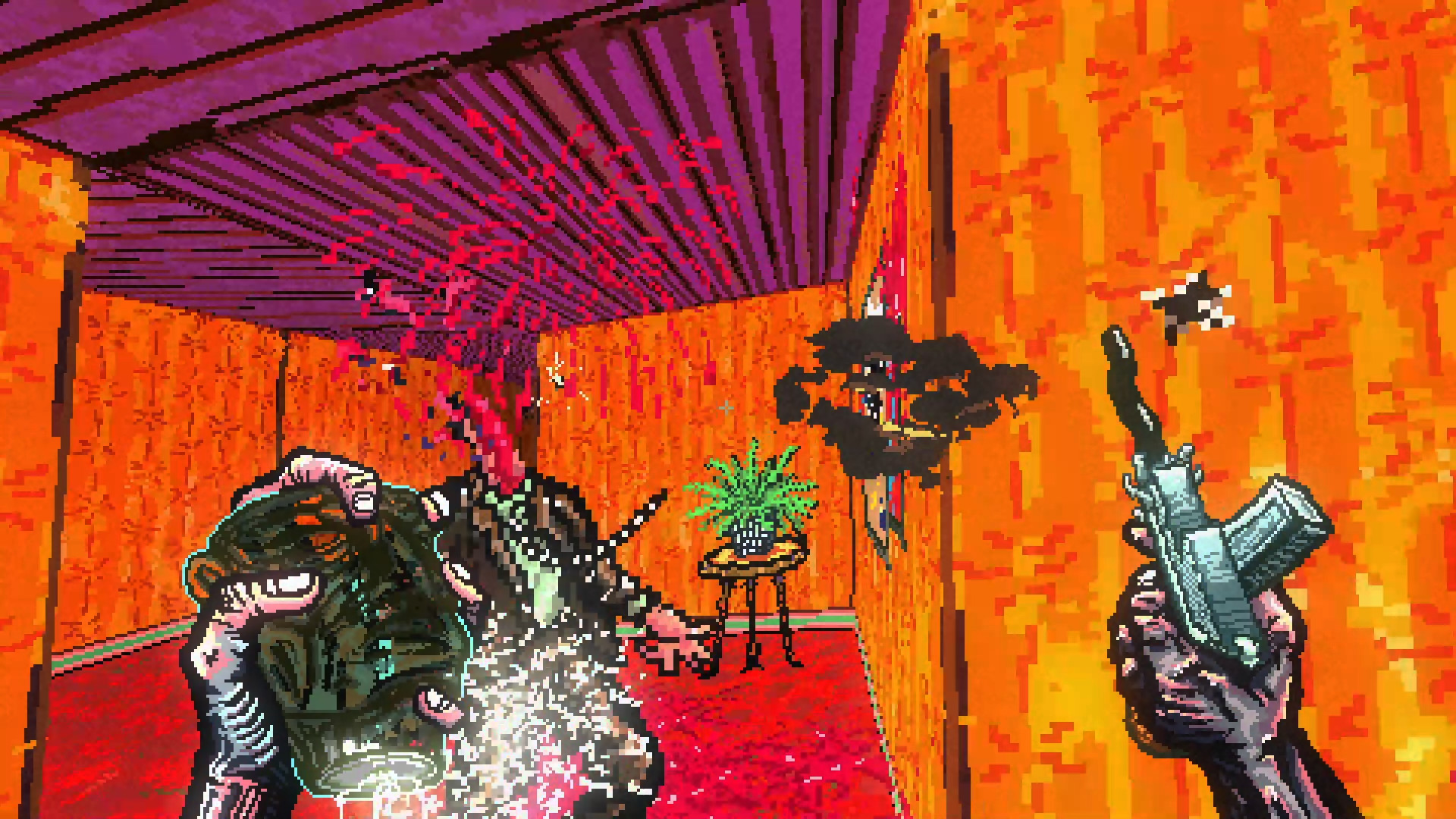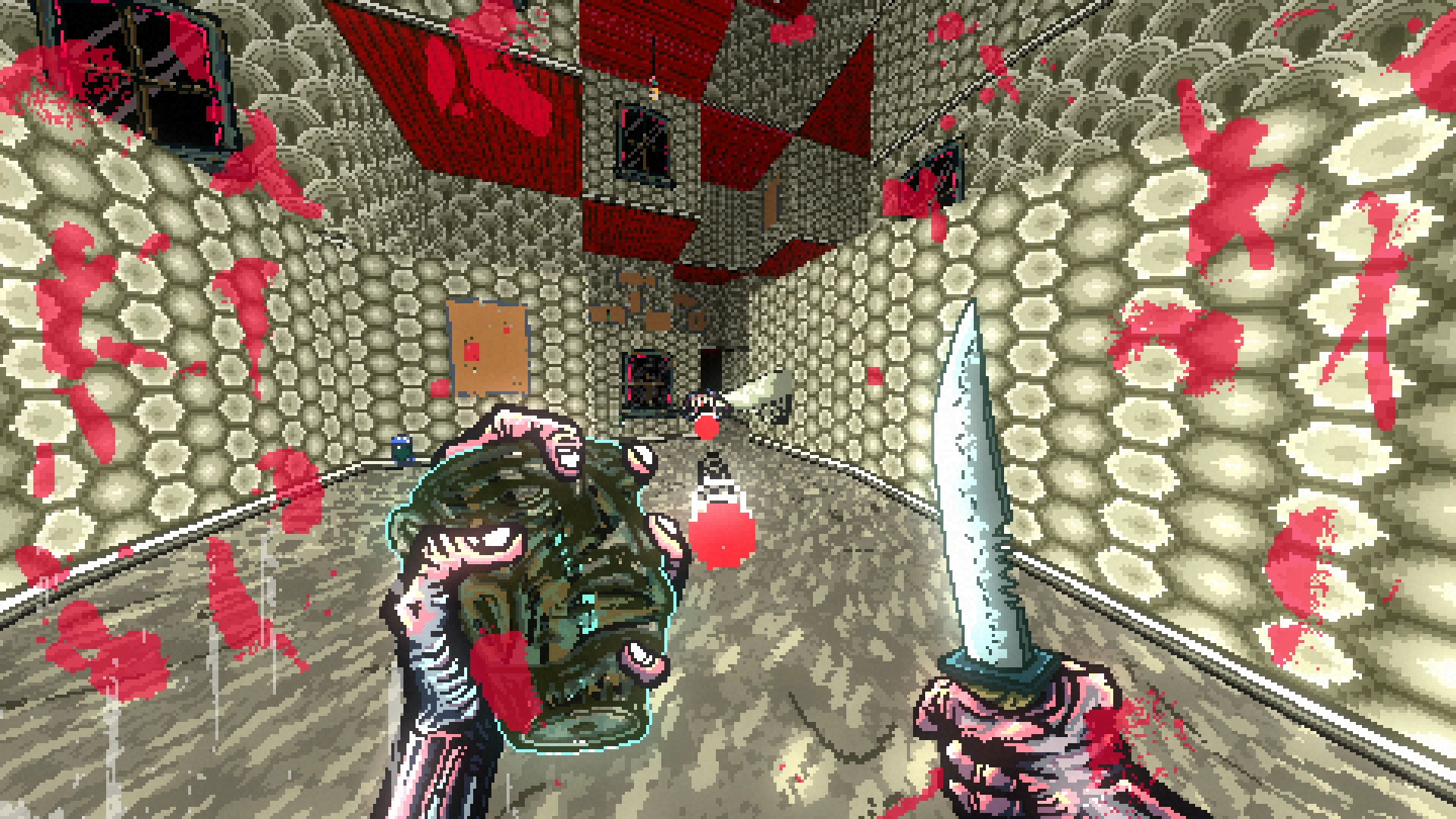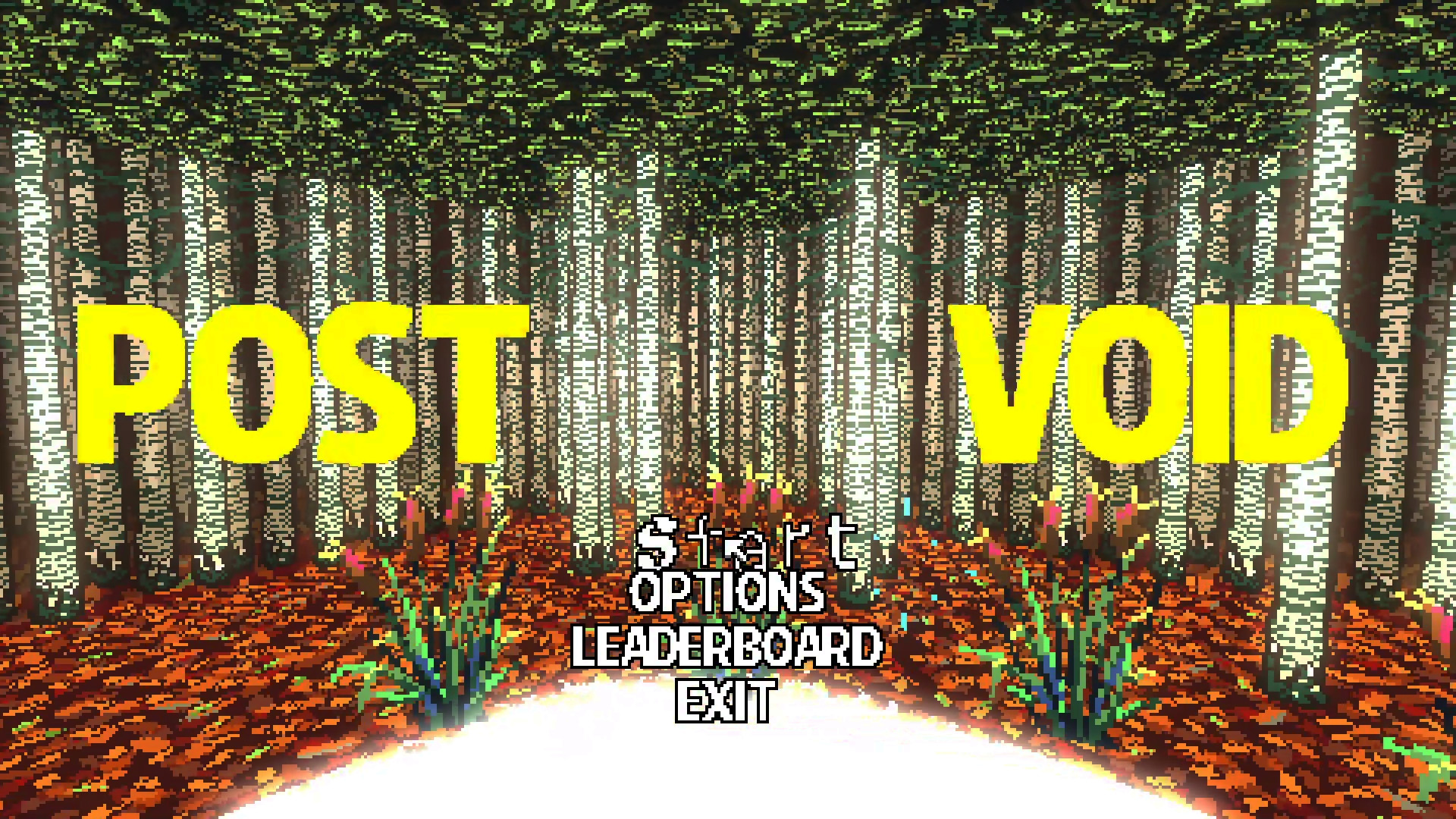Post Void is Mullet Mad Jack on Psychedelics and Overstimulation
A twisted trip of a corridor shooter

The recently released Mullet Mad Jack is a raucous romp through tight-knit corridors dripped in cyberpunk neon. It marries sci-fi aesthetics with the current cultural zenith of follower-obsessed social media influencers, predicting a satirical future in which the lines of humanity are interspersed with the internet. If the macho man protagonist doesn't get a sweet hit of dopamine from his loyal livestream viewers every 10 seconds, he perishes. This forces the player into a chaotic scramble to kick, katana-slice and shoot their way through cyberhumans and robo-thugs as quickly as possible. It's the most fun I had holding a virtual gun this year.
If '90s anime copulated with the boomer-shooter revival, this is how the baby would look. I have a sneaking suspicion there's a secret lover involved in this twisted union, an inexpensive visual oddity known as Post Void, released 4 years ago in 2020. This assumption is somewhat confirmed by the fact the devs themselves have acknowledged the comparison, having met the developers of Post Void at Gamescom, who, in turn, assisted in making the game "even faster".
I draw this comparison because the similarities between the two are unavoidable. Both are frenetic first-person-shooters, both share rogue-lite elements, where success is met with better weapons and upgrades, whereas failure is punished via loss of all (if not most) of your progress. Speed is the name of the game - the eponymous Mullet Mad Jack and the unnamed Post Void protagonist have ticking death timers which can only be delayed via murder and bloodshed.
Mechanically, they seem to be the same game, with their chaotic skirmishes through claustrophobic halls, albeit with their own twists and aesthetics. What sets Post Void apart is its unique approach to visual vomit, to psilocybin-laced vistas and grotesque ephemera. Mullet Mad Jack, because of its anime and cyberpunk inspirations, is, ultimately, artistically derivative, which I say without derision. Both are incredible games, both are absolutely worth your time. But one is more idiosyncratic than the other.

If '90s anime copulated with the boomer-shooter revival, this is how the baby would look.
I would define both games not as boomer-shooters, but as corridor shooters. Brief rampages through short levels with a ticking time bomb as a health bar. In Post Void, your life is represented by a constantly depleting relic, replenished with a mysterious glowing white liquid with successful kills. This constant stressor is what motivates you to scramble through the surreal world. When I would see the countdown reach "3...2..." I felt as if my heart would beat out of my chest. I would then bumble my way through a headshot and ferociously carve my way to the finish line, almost a second too late.
Like many rogue-lites, synergies and clever usage of weapons and upgrades will get you far. In Mullet Mad Jack, I gleefully chose the spawn barrels upgrade with a level 2 shottie and set off more explosives than a Michael Bay set. For Post Void, I reveled in the visual cacophony by picking the Uzi and bouncy rubber bullets, spraying small white pellets all over the rooms for maximum damage.
Mullet Mad Jack spices things up with environmental hazards such as blazing lava pools and toxic sludge, urging the player for a bit of caution as they speed their way up the floors of the deadly tower. Mullet Mad Jack, in general, has more environmental interactivity than Post Void, which leads to a deeper state of play. You can use Mullet's signature boot to great effect, be it kicking enemies into TV screens for an electric shock or towards eviscerating, rotating fans. My favorite combo involved kicking an enemy into a vending machine, drinking the dispensed soda for full health recovery, then using the empty can as a grenade (thanks to a perk I chose a couple of floors below), which I lobbed at the remaining shotgun goon in the room.
Post Void is considerably less varied in environmental interactivity, but its simplicity belies a truly unique, visually overstimulating, psychedelic experience. Its hand-painted, chunky, pixelated graphics, punchy sound design and guitar-riffin' soundtrack assist in giving this 3 dollar game a great deal of artistry. While the gameplay is not complex, I wouldn't categorize it as shallow – there's a surprising amount of depth to the Post Void experience.

Mullet Mad Jack spices things up with environmental hazards such as blazing lava pools and toxic sludge, urging the player for a bit of caution as they speed their way up the floors of the deadly tower.
The levels are maze-like, its halls accentuated with simple decorations such as framed paintings and potted plants, which add to the uncanniness of the experience. The normal seems out of place in the topsy-turvy world of Post Void. At times, I felt like I was stuck in a Windows 95 screensaver – specifically the one in which you traverse a labyrinth with the same repeating brick walls and bland, beige floors. It's incredibly easy to get lost, purposefully so.
The black-suit-wearing, Chain-Chomp-looking thugs or flying 2D manhacks aren't your only enemies – the environments themselves serve to confuse and defy you. This adds an extra layer of difficulty in a game that requires zany-like speed and twitch-like reflexes. It's not enough to be good at runnin' 'n' gunnin'. If you don't pay attention to where you're going, the countdown will reach zero once you've found yourself stranded, unable to find the lake-portal to the next level.
Some enemies attempt to disorient or block you rather than cause harm. Walls of living flesh and entrails serve as disgusting obstacles that must be vanquished via a single well-placed shot. If your accuracy is not on point, you must whittle their hardy health, costing you precious seconds. Mid-game, scuttling hands with lightbulbs mark their appearance by flashing a bright light in your face, whitening your screen and dazing you, the player, directly.
The game is not afraid to continuously assault you with harsh and sudden images. It is an epileptic nightmare of brightness and stimuli. You will have multiple enemies shooting at you, sawblades vibrating your screen and the equivalent of a thousand flashbangs going off in your face. Post Void hides its intended playstyle under all these layers of aesthetic maximalism. Because the path to victory involves learning how to retain your focus amongst the visual noise.

The game is not afraid to continuously assault you with harsh and sudden images. It is an epileptic nightmare of brightness and stimuli.
"Post Void" implies a state past nothingness. The void is eternal darkness, vast emptiness. Silence. The world after the void is a headache – and a flower that blooms with the promise of safety. One must hold their head in their hands, detached from what's around, mustered to face the abyss once more. To reach serenity via a path of bloodshed. "To a time called POST VOID. To a place called POST VOID".
The player must run with their heads detached from the neck. You must achieve a state past Nirvana – past Enlightenment. Past the Void. Your first attempts will be rough. The first time you make it to the final stages, you will be stormed by a flurry of bullets and flashing lights. If you play the game too long, your eyes might start to hurt. Feel free to play it immediately after recovering from eye surgery (like I did) for the most authentic experience.
When the game finally clicks, when you are effortlessly pulling off headshots while zooming through the floor – that's "the time called Post Void". The best runs I had in the game, including the one that finally led me to victory, were the ones in which I completely shut off external stimuli. I turned my brain off. I became one with the floral creatures and the liminal hallways. No thought pattern governed my moves. I was a creature of instinct and inhibition.
When I finally beat the game, my screen was covered in blood, my character was holding a pixelated knife and I was shaking from the adrenaline. Soon, the relic was cracked, letting its contents spill into the now-moist soil. The pixels of my LCD monitor sparkled with the light of a blooming flower. That is "the place called Post Void". It felt like sobering up after an acid trip.
I initially compared Post Void to Mullet Mad Jack to showcase what is most likely the birth of a new genre – the rise of the frenetic, speedy, rogue-lite corridor shooter. To present Post Void as the initiator, the creator of what I hope to be many games of its ilk to come. Mechanically inspirational and aesthetically unique. There will be no other game like Post Void, not even its successors.

